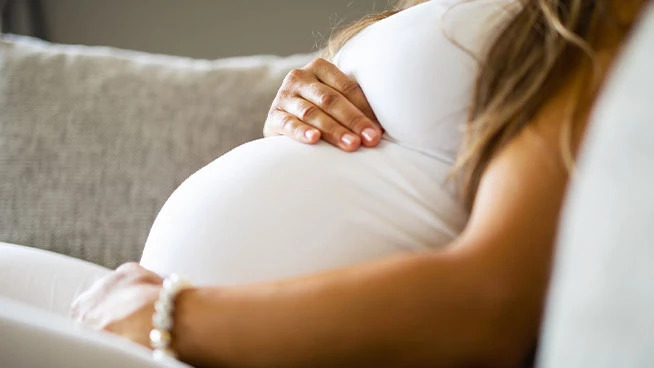Preventive Healthcare
Pregnancy Contractions: Everything You Need To Know About the Signs Of Labor
59370 Views
0

What is a Pregnancy Contraction?
Pregnancy contractions are a normal part of pregnancy and labor. They include contractions in the uterine muscles, leading to pain or cramping in the lower back. Your uterine muscles tighten and flex in preparation for labor and to push the baby down the birth canal.
The type and intensity of contractions may differ from one pregnant individual to another. There are also differences between labor and non-labor contractions, among other types.
Pregnancy contractions get the baby in position for delivery and help its movement through the birth canal. However, having pregnancy contractions nearing the due date doesn't necessarily mean you are starting labor. Sometimes, it can indicate that your body is preparing for the real scenario.
What Does a Pregnancy Contraction Feel Like?
Pregnancy contractions differ among individuals. But, the tell-tale signs of the beginning of a contraction are tightening of the abdomen, pain, and cramping that begins in the lower back and radiates to the front. Labor contractions include tightening the uterine muscles with a wave-like feeling as the intensity rises and decreases over time.
Pregnancy contractions can feel like intense menstrual cramps, which include pelvic pressure and abdominal pain. It can also include a dull backache. Pregnancy contractions may also become stronger once the water breaks.
What are The Different Types of Contractions?
At any point in pregnancy, the uterus may tend to tighten the muscles. However, being aware of the type of contraction and the stage can help pregnant women feel more prepared. The types of pregnancy contractions include
1. Braxton Hicks contractions
These are known as prodromal or false contractions as they usually occur during the second or third trimester. These contractions can be identified as they are infrequent and irregular and act as a way for the muscles to prepare for the actual contractions. These contractions are usually
- concentrated in the abdomen
- uncomfortable
- usually get better upon lying down or emptying the bladder
- make the belly feel tight
These prenatal contractions usually occur when you feel tired, dehydrated, or have a full bladder. To manage Braxton Hicks contractions, it is best to be hydrated, take enough rest, change the position of sitting or sleeping, and practise breathing exercises and relaxation techniques.
2. Preterm Labor Contractions
Preterm labor contractions occur before 37 weeks, and these may be a sign of premature labor. The duration of the contractions is also significant, with a gap of 10–12 minutes between each pregnancy contraction. Preterm labor contractions may feel like
- hardness of the abdomen and regular uterine contractions
- painful menstrual cramp-like feeling
- backache accompanied by vaginal discharge
- pelvic pressure
It's best to call the doctor in the case of any water discharge or other vaginal discharge and to pay attention to the duration and intensity of the contractions. This is important information to provide the doctor to prevent labor from progressing.
To cope with preterm labor contractions, it's best to avoid dehydration, relieve uterine muscle contractions through warm baths, lying down, and using a pillow to support the back.
3. Early Labor Contractions
The cervix begins to dilate and the contractions last anywhere from 30 to 90 seconds. They come at regular intervals of time and include
- pain radiating from the back to the abdomen
- severe cramps
- difficulty breathing
4. Active Labor Contractions
This type of pregnancy contraction is increasingly painful and indicates that delivery is approaching. The cervix dilates further. The contractions are closer, about 4-5 minutes apart, and last anywhere from 30 seconds to a minute. These contractions may include
- an urge to push
- contractions that get closer and last until a minute
- nausea, hot flashes, gas, and vomiting
- pain that radiates as the baby descends down the birth canal
5. Transition Labor Contractions
This is the final phase where the pressure is on the rectum, back and vagina. Only when the cervix is fully dilated will the doctor advise the pregnant woman to push.
The contractions, in this case, last 60-90 seconds and occur every 3-5 minutes. These pregnancy contractions are the most intense part of the labor and are associated with extreme pressure. They affect the vagina, pelvis, and back.
Timing of Pregnancy Contractions
Labor contractions tend to occur at certain, regular intervals. Hence, timing them is important. Using a watch and a simple notepad or a mobile app will do. For more accuracy, it’s best to use a phone app or a stopwatch with a timer button.
Here are some simple steps to follow to record the contractions.
- Jot down the time when you feel the tightening in the abdomen.
- Notice the intensity of the contraction, and check for a peak.
- When the tightening ends, note down the time. Another method is to not write down the time until the next contraction begins.
- The time interval between the beginning and end of the contraction is the frequency of contractions
- It is advised to continue timing each contraction for a few more rounds to notice a pattern.
Pregnancy contractions early in active labor follow a 3-1-1 rule. Contractions last every 3 minutes, lasting 1 minute and recurring for 1 hour.
For reference, a pregnancy contractions chart may look like this:
| Labor stage | Interval between contractions | Length of contraction |
| Early labor | 5-30 min | 30-45 sec |
| Active labor | 3-6 min | 50-70 sec |
| Transition to birth | 30 sec to 2-3 min | 60-90 sec |
How to Deal with Pregnancy Contractions?
Pregnancy contractions are the most intense phases of labor. They may arrive during the final weeks and can be handled through drug-free management methods such as
- walking
- breathing exercises
- lying down and switching positions
- placing a pillow at your back for support
- finding ways to distract yourself from the pain, such as listening to soothing music
In certain cases, analgesics and anaesthetics are used. The doctor may recommend the best option based on the circumstances. However, as a patient, familiarising yourself with pain management options before going into labor can come in handy.
Pregnancy contractions are totally normal, and it's important to remember that you can and will get through the temporary pain for the permanent joy of holding your baby in your arms! Book Double Marker Test for pregnancy.























 WhatsApp
WhatsApp
